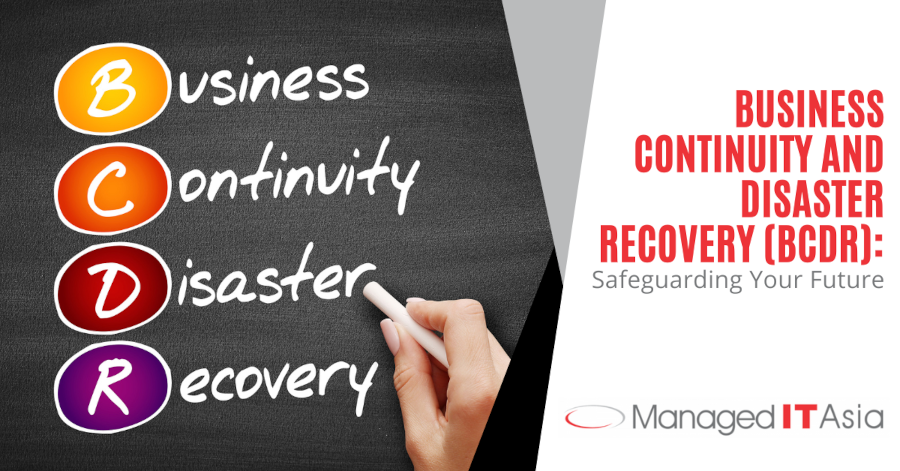In today’s fast-paced and interconnected business world, ensuring the uninterrupted flow of operations is paramount. Any unforeseen disruption, whether caused by natural disasters, cyberattacks, or hardware failures, can have severe consequences. That’s where Business Continuity and Disaster Recovery (BCDR) strategies come into play.
In this comprehensive guide, we’ll navigate through the critical concepts of BCDR, exploring its importance, components, best practices, and how it can be your lifeline in times of crisis.
The Foundation of Resilience: Understanding BCDR
The Imperative of Business Continuity
Business continuity is more than just a buzzword; it’s a strategic imperative. It encompasses the processes and procedures that ensure essential business functions continue, even in the face of adversity. These functions range from customer service and supply chain management to data storage and communication systems.
Disaster Recovery as the Safety Net
Disaster recovery, on the other hand, focuses on the rapid restoration of IT systems, data, and critical applications in the event of a disaster or system failure. It’s a subset of business continuity, specialising in the technology and data aspects that underpin an organization’s operations.
The Components of BCDR
Risk Assessment and Business Impact Analysis (BIA)
Before creating a BCDR plan, it’s vital to understand your organization’s unique vulnerabilities and the potential impact of disruptions. A comprehensive risk assessment and BIA are the building blocks of a resilient BCDR strategy.
Data Backup and Recovery
Data is the lifeblood of modern businesses. Robust BCDR includes regular data backups and efficient recovery processes. This involves defining what data to back up, where to store it, and how to retrieve it swiftly when needed.
Redundancy and Failover Systems
Redundancy and failover systems ensure that critical functions can switch seamlessly to backup systems in case of a failure. This includes redundant hardware, data centers, and network connections.
Incident Response Plans
In the event of a disaster or cybersecurity breach, clear incident response plans are essential. These plans outline the steps to take, roles and responsibilities, and communication strategies to minimize damage and downtime.
Employee Training and Awareness
Your employees are a critical part of BCDR. Training and raising awareness about disaster preparedness and cybersecurity best practices are vital to ensure they can respond effectively during a crisis.
BCDR Best Practices
Regular Testing and Drills
A BCDR plan is only effective if it works when needed. Regular testing and drills help identify weaknesses and areas for improvement. This should include tabletop exercises, technical tests, and full-scale simulations.
Documentation and Version Control
Keep your BCDR documentation up to date. This includes recovery procedures, contact information, and system configurations. Version control ensures that everyone is working with the latest information.
Collaboration and Communication
Effective communication is key during a crisis. Establish communication protocols both within the organization and with external stakeholders, such as clients, suppliers, and regulatory authorities.
Vendor and Partner Assessments
If your BCDR plan relies on third-party vendors or partners, assess their BCDR capabilities. Ensure they have robust plans in place to support your business in times of disruption.
The Crucial Role of Technology in BCDR
Cloud-Based Solutions
Cloud services have revolutionized BCDR by offering scalable and cost-effective solutions. Storing data and running critical applications in the cloud provides flexibility and redundancy.
Data Replication and Virtualization
Data replication and virtualization technologies allow for the creation of exact copies of systems and data. This enables quick recovery and minimal data loss in case of a disaster.
Advanced Threat Protection
In today’s threat landscape, cybersecurity is integral to BCDR. Implement advanced threat protection measures, including intrusion detection systems, firewalls, and security information and event management (SIEM) solutions.
Tailoring BCDR to Your Business
Customization is Key
BCDR is not a one-size-fits-all solution. It must be tailored to your organization’s specific needs, taking into account factors such as industry regulations, geographic location, and the nature of your operations.
Scalability and Flexibility
As your business grows and evolves, so should your BCDR strategy. Ensure that it’s scalable and adaptable to accommodate changes in technology and business processes.
Regular Reviews and Updates
BCDR should not be a static document. Regularly review and update your plan to reflect changes in your organization and the evolving threat landscape.
Conclusion: Protecting Your Business, Ensuring Your Future
In a world rife with uncertainties, a robust BCDR strategy is your shield against disruption and your path to resilience. It safeguards your operations, protects your data, and preserves your reputation in the face of adversity. At Managed IT Asia, we understand the critical importance of BCDR in today’s business landscape. We offer comprehensive BCDR solutions tailored to your unique needs. Contact us today to discuss how we can help you fortify your business continuity and disaster recovery strategy. Your business’s future is our priority, and we’re here to support you every step of the way.
MANAGED IT ASIA, we are an IT Support, IT Solutioning and Managed IT Service Provider specializing in serving Small Businesses across Asia. Call us at +65 6748 8776 and let us manage your Small Business IT today!
